I didn’t expect an Egyptian room at the Vatican Museum. Over the last two thousand years, the Vatican purchased, gathered, commissioned, and was gifted perhaps thousands of treasures. The Egyptian room includes some of these treasures.
Photoblog, Rome, Italy, Europe. April 3, 2025
What are we doing in Europe? Here is the story. Touring Europe might be a crazy idea.
Statues in the Egyptian room
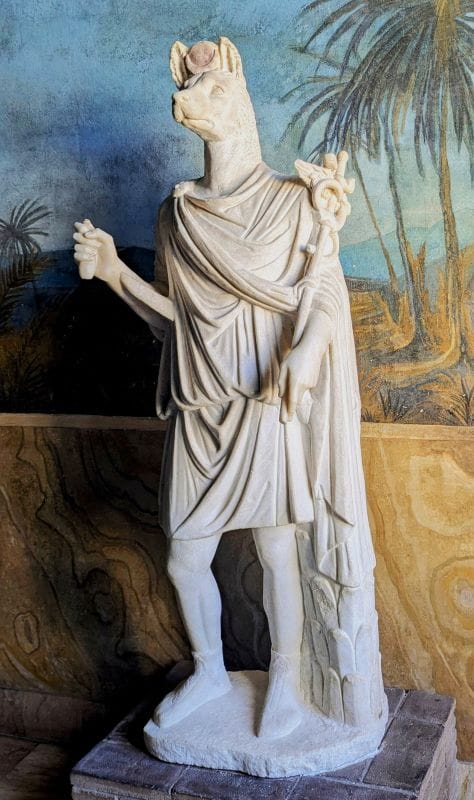
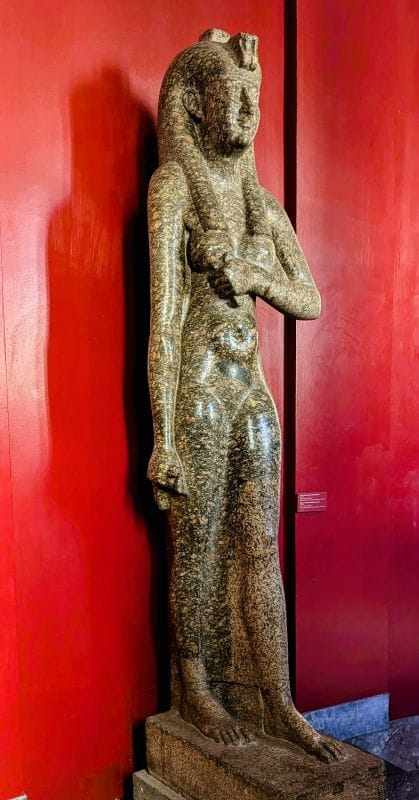
The statue would have been brought to Rome and placed in the emperor Caligula’s “Gardens of Sallust,” along with the statues of Ptolemy II, Arsinoë II, and Drusilla-Arsinoë. It was unearthed in 1714 in the gardens of Vigna Verospi and entered the Vatican upon the foundation of the new Egyptian room at the Vatican Museum in 1839. Dynasty XVIII, reign of Amenhotep III (1391-1353 B.C.); Dynasty XIX, reign of Ramesses II (1290-1224 B.C.)
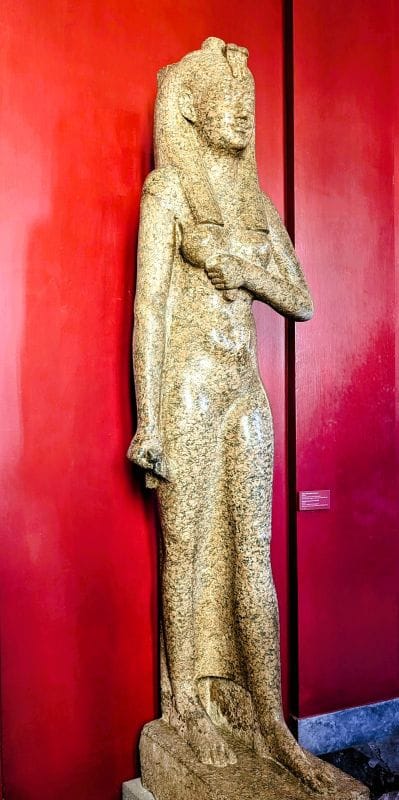
This statue, found in Rome, was sculpted from granite in 285 -246 B.C. Queen Arsinoe II is identified with Isis and is considered the Goddess of magic and music.
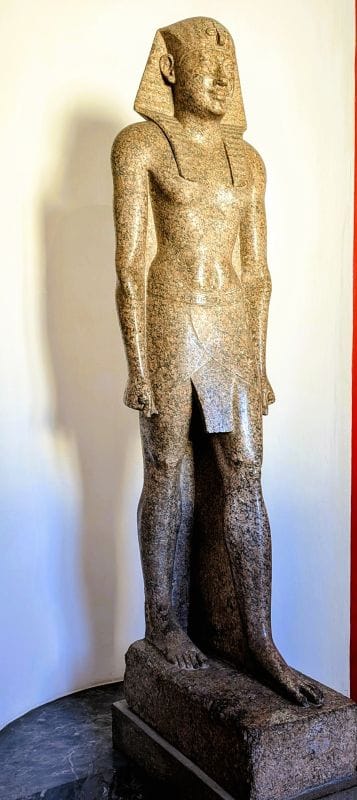
Discovered in 1714 in Rome, in Vigna Verospi, the ancient site of the “Gardens of Sallust,” the statues portray, according to the traditional pharaonic iconography, Ptolemy II and his sister-wife Arsinoë II.
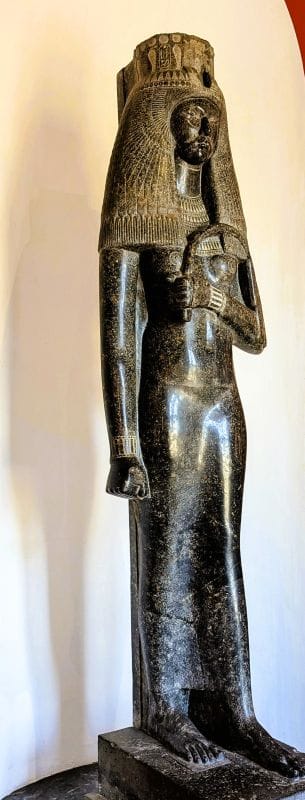
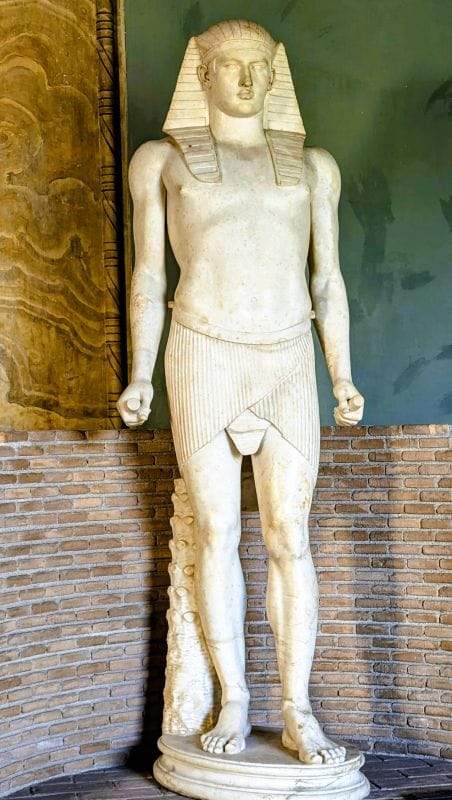
Antinous was the favorite of the emperor Hadrian, who died in the waters of the Nile (130 A.D.). In the area where the tragic event occurred, the emperor founded the city of Antinopolis in his honor. The statue was unearthed in 1740 at the Casino Michili.
The statue was donated to Pope Benedict XIV and placed in the Capitoline Museum in 1742. Gregory XVI requested that it be transferred to the Vatican in 1838 to be displayed in the new Egyptian Museum.
Sarcophagus and mummies in the Egyptian display
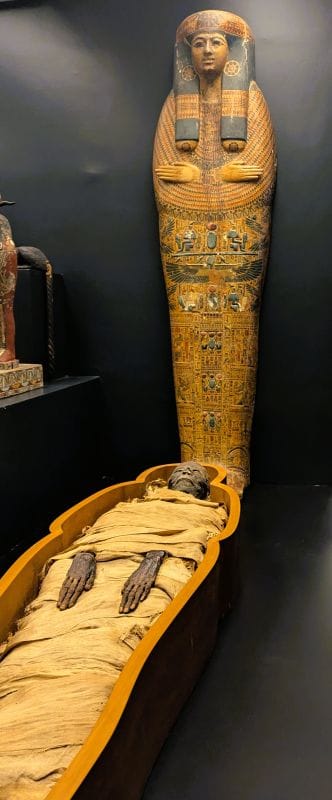
The mummy was created first by removing and drying the organs and the rest of the body. Then, it was wrapped in bandages and covered with a shroud. Amenirdis’s mummy is displayed in its original painted wood sarcophagus, including its intact lid.
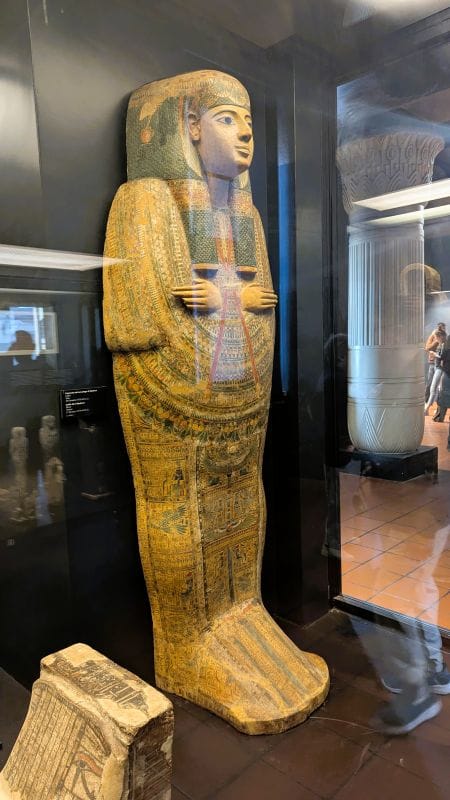
Djedmut was the singer of the god Amon-Ra of Karnak, dating from the beginning of Dynasty XXII. The Vatican Museum website has much better pictures, including photos of the inside of the sarcophagus.
Please subscribe and join us on our journey.
We will add you to our email list and send you updates once a week. Here is a link. Subscribe
About our links
As you know, our blog income is zero, which allows us to be independent and tell the truth. We do not get income or commissions. No, we don’t make paid endorsements. We don’t make recommendations; instead, we will tell you what we like (or dislike). The links are only provided as a quick reference to help our readers.
Links
About our photos
These photos were taken during our visit. Our photos are often “enhanced” to represent what we saw in person and correct for lighting and other things. Sometimes, this editing makes the images look better than what we saw in person.
About comments
We love seeing your comments, but they are not automatic. I get about twenty spam comments every day, and thus, I have to turn off automatic comments. I read and then publish every comment personally to protect the blog and keep it on the subject and real. You will not see your comment right after you hit submit. Sorry for the delay in publishing your comments. Some comments come from personal emails and Facebook. Please know that we would love to hear from you.


I would love to see that some day. But I’m enjoying traveling with you.